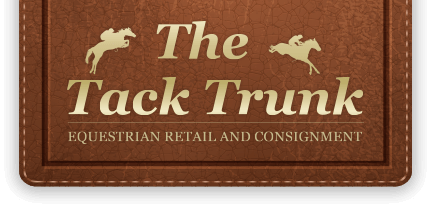
Did you know a properly fitting saddle can make a huge difference in your ability to ride safely and effectively? Riding in a saddle that is too big can often shift a rider’s position too far back, making their leg sit out in front of them. A saddle that is too small can pitch a rider too far forward. For hunter/jumper and eventing riders, staying balanced over our leg, especially over fences, ensures for a smoother ride and a happier horse. For dressage riders, the saddle should be sized to allow the rider to sit in a neutral position and allow for the use of the seat while riding. Knee blocks and the depth of the seat and the width of the twist are more personalized to the rider’s anatomy and personal preference for dressage saddles but the same basics of sizing can be applied across the board when fitting English saddles.
Close contact and jumping saddles: Typically have a shallower seat and lower pommel and cantle. This is because a lot of the riding done in a jumping saddle requires the rider to be balanced over their leg in two-point or half seat position. The stirrup bars are placed further forward and the twist of the saddle tends to be narrower to allow closer contact with the horse. Variations of style and fit such as knee and thigh blocks and length of flap will allow the rider to customize the fit of their saddles.
Fit Checks:
- A hand in front and behind the rider’s seat in the saddle is a good rule of thumb for correct seat size.
- The flap of the saddle should not come too far down the rider’s calf when sitting in the saddle with the leg hanging straight down, nor too short! Generally, the flap will fall only about a third of the way down the calf. The goal in determining flap length is to avoid having the edge of the saddle flap interfere with the top of tall boots or half chaps.
- Angle of the flap is usually determined by the measurement from hip to knee on the rider. The angle and size of the saddle flap should complement the angle of your leg. Your knee should hit at the top point of the flap with about two fingers to spare.
Dressage Saddles: Due to the different leg and seat placement when riding dressage, fitting dressage saddles will vary from close contact or jumping saddles. Generally the flap length, with the flap hitting about ⅓ of the way down the calf, is still correct. If the flap is too long, the rider will not be able to use leg aids effectively and if it is too short, the boot can become stuck under the flap. Seat sizing is similar as well, about a hand in front and behind.
Fit Checks:
- The rider’s thigh should be parallel to the front of the flap
- The rider’s knee should sit about 2 fingers behind the front of the flap
- The stirrup bar needs to be set where it allows the rider’s leg to hang straight down in a neutral position – directly under the hips.
- The twist of the saddle helps a rider find correct positioning. Too wide of a twist will push the rider into a chair seat and too narrow will not allow the rider to use their thigh effectively.
Remember, it is very important to try any saddle on your horse to ensure that it sits in proper balance for you and is correctly fit to your horse before purchasing any saddle!
